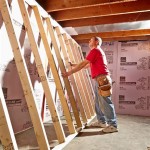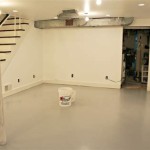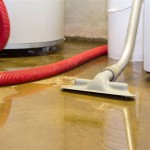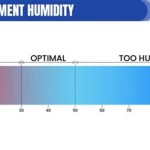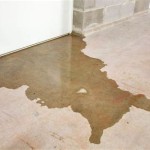Insulating Your Basement with Rigid Foam: Essential Aspects
Insulating your basement with rigid foam is a crucial step in improving the energy efficiency of your home and creating a more comfortable living space. Rigid foam insulation provides excellent thermal resistance, preventing heat loss and reducing heating costs. Here are some essential aspects to consider when insulating your basement with rigid foam:
Advantages of Rigid Foam Insulation
Rigid foam insulation offers several benefits for basement insulation:
- High Thermal Resistance: Rigid foam has a high R-value per inch, providing excellent thermal insulation.
- Moisture Resistance: It is inherently resistant to moisture absorption, making it suitable for wet and humid environments.
- Structural Support: Some rigid foam panels provide structural support, making them ideal for use under flooring.
- Easy to Install: It is relatively easy to install, even for DIY enthusiasts.
Types of Rigid Foam Insulation
There are several types of rigid foam insulation available, including:
- Extruded Polystyrene (XPS): A rigid, closed-cell foam with excellent moisture resistance.
- Expanded Polystyrene (EPS): A less dense, open-cell foam that is less expensive than XPS.
- Polyisocyanurate (PIR): A high-performance foam with exceptional thermal resistance.
Thickness and R-Value
The thickness of the rigid foam insulation you need depends on the desired R-value and your local climate. A higher R-value indicates greater thermal resistance. For most basements, an R-value of 10 to 15 is recommended.
Installation Considerations
When installing rigid foam insulation in your basement, it is important to:
- Prepare the Surface: Ensure the basement walls and floors are clean, dry, and free of debris.
- Cut and Fit: Cut the rigid foam panels to size and fit them snugly against the surfaces being insulated.
- Adhere to Walls: Use construction adhesive or mechanical fasteners to secure the panels to the walls.
- Seal Joints: Fill any gaps between panels with expanding foam or caulk to prevent air infiltration.
Additional Tips
- Consider Moisture Control: If your basement is prone to moisture, install a vapor barrier below the rigid foam insulation to prevent moisture build-up.
- Protect against Rodents: Rigid foam insulation can be attractive to rodents. Install protective measures, such as metal mesh or rodent-repellent spray.
- Hire a Professional: If you are not comfortable insulating your basement yourself, consider hiring a qualified contractor.
Conclusion
Insulating your basement with rigid foam is an effective way to improve energy efficiency, reduce heating costs, and enhance comfort levels. By following these essential aspects, you can successfully insulate your basement and create a more energy-efficient and comfortable living space.

How To Insulate Your Basement Part 3

Why Is It Absolutely Necessary To Insulate Your Basement Blog

How To Insulate A Basement With Rigid Insulation Buildwithhalo Com

Why Use Rigid Insulation Board On Basement Walls

Should I Cut Air Space In My Basement Foam Board Insulation Home Improvement Stack Exchange

Basement Blanket Insulation Building America Solution Center

Can You Install Foam Boards Directly Against Basement Walls Ecohome

Basement Blanket Insulation Building America Solution Center

Insulation Rigid Foam On Basement Walls Home Improvement Stack Exchange

Owens Corning Foamular Ngx F 150 1 In X 4 Ft 8 Sse R 5 Xps Rigid Foam Board Insulation 20wengx The Home

